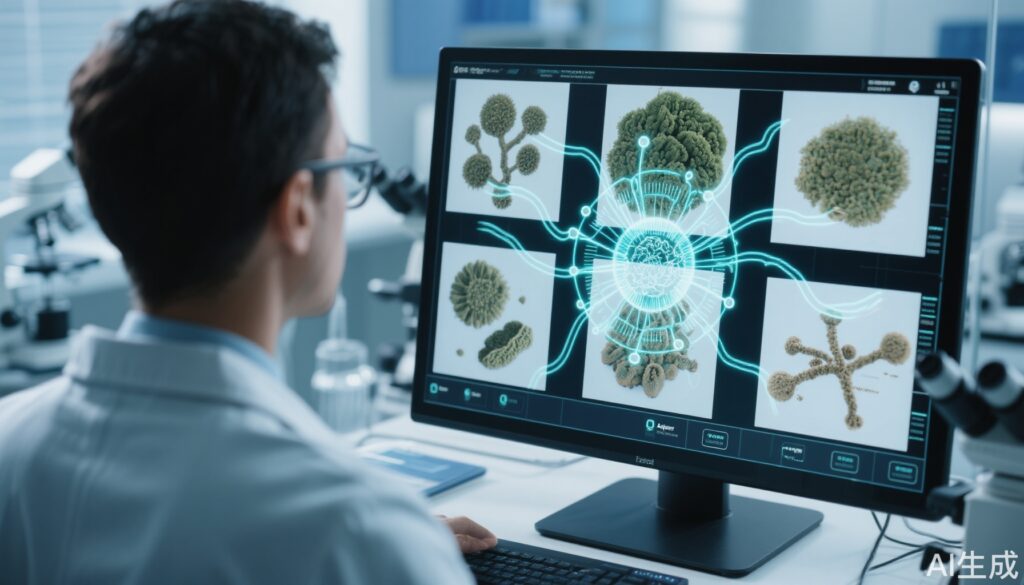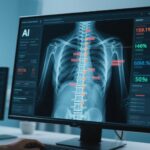Highlights
- AI-based image recognition, particularly using ResNet-18, achieved over 99% accuracy in identifying key Aspergillus species from colony images.
- The approach offers a rapid, cost-effective, and expertise-light alternative to conventional identification methods.
- Diagnostic performance correlates with the distinctiveness of morphological features in fungal colonies.
- This technology holds promise for wider adoption in routine clinical mycology after further validation and database expansion.
Study Background and Disease Burden
Aspergillus species are ubiquitous environmental fungi responsible for a spectrum of diseases, from allergic reactions to life-threatening invasive aspergillosis, particularly in immunocompromised patients. Accurate and timely species identification is pivotal for optimal clinical management, as antifungal susceptibilities and epidemiological profiles differ among species. Traditional identification relies on morphological expertise, while advanced techniques such as PCR-sequencing and MALDI-TOF MS, though accurate, require costly equipment and specialized personnel, limiting their accessibility in resource-constrained settings. The need for rapid, affordable, and scalable diagnostic solutions is therefore urgent, especially as global rates of invasive fungal infections rise.
Study Design
This proof-of-concept study by Tsang et al. (Emerg Microbes Infect, 2025) evaluated the feasibility of artificial intelligence (AI)-based image recognition for automatic Aspergillus species identification. The study utilized a total of 6,867 colony images from four clinically important Aspergillus species, which were divided into training (2,813 images), validation (2,814 images), and testing (1,240 images) sets. Three convolutional neural network (CNN) models—ResNet-18, Inception-v3, and DenseNet-121—were trained and validated to classify species based on digital images of fungal colonies grown on culture media. The main outcome was the accuracy of species identification in the independent test set.
Key Findings
ResNet-18 demonstrated superior performance compared to Inception-v3 and DenseNet-121, achieving the highest testing accuracy (99.35%) and the fewest misidentifications (n = 8) among the models evaluated. The study also observed that images exhibiting more distinctive morphological features—such as colony color, texture, and growth pattern—were more reliably identified by the AI system. This underscores the importance of image quality and feature distinctiveness in automated fungal diagnostics.
The AI-based approach offers several pragmatic advantages:
– **Turnaround time:** Automated image analysis is rapid, potentially reducing diagnostic delays compared to conventional phenotypic or molecular methods.
– **Resource requirements:** The method minimizes dependence on specialized mycological expertise, molecular biologists, and high-cost reagents or equipment.
– **Scalability and user-friendliness:** Once established, the system can be deployed in diverse laboratory settings with minimal training.
Notably, the study identified the need for database expansion to encompass more species and morphological variants to further improve accuracy and generalizability.
Expert Commentary
This study represents a significant step toward democratizing fungal diagnostics, offering a scalable tool that can be particularly impactful in low-resource settings. The near-perfect accuracy of ResNet-18 is promising, though real-world implementation will require validation across broader species spectra, culture conditions, and image acquisition modalities. As highlighted by the authors, the success of AI-based identification depends on a robust and diverse image database—a challenge that necessitates multicentric collaboration.
Current guidelines from the Infectious Diseases Society of America (IDSA) and the European Confederation of Medical Mycology (ECMM) emphasize the importance of timely and accurate Aspergillus identification for guiding antifungal therapy and epidemiological surveillance. AI-driven diagnostics, if validated and integrated, could complement existing workflows, enhancing laboratory efficiency without supplanting the need for molecular confirmation in ambiguous cases.
Limitations include the proof-of-concept nature of the study, limited number of species, and the reliance on image quality. Potential confounders such as mixed cultures, atypical morphologies, or laboratory artifacts were not addressed and represent avenues for further development.
Conclusion
AI-based image recognition using convolutional neural networks, exemplified by ResNet-18, offers a highly accurate, rapid, and cost-effective strategy for Aspergillus species identification from colony images. With further refinement and database expansion, this technology could transform routine clinical mycology, expanding access to timely fungal diagnostics worldwide. Future research should focus on broader species representation, integration with laboratory informatics, and real-world validation in varied clinical contexts.
References
1. Tsang CC, Zhao C, Liu Y, Lin KPK, Tang JYM, Cheng KO, Chow FWN, Yao W, Chan KF, Poon SNL, Wong KYC, Zhou L, Mak OTN, Lee JCY, Zhao S, Ngan AHY, Wu AKL, Fung KSC, Que TL, Teng JLL, Schnieders D, Yiu SM, Lau SKP, Woo PCY. Automatic identification of clinically important Aspergillus species by artificial intelligence-based image recognition: proof-of-concept study. Emerg Microbes Infect. 2025 Dec;14(1):2434573. doi: 10.1080/22221751.2024.2434573.
2. Patterson TF, Thompson GR, Denning DW, et al. Practice Guidelines for the Diagnosis and Management of Aspergillosis: 2016 Update by the Infectious Diseases Society of America. Clin Infect Dis. 2016;63(4):e1-e60. doi:10.1093/cid/ciw326.
3. Arvanitis M, Anagnostou T, Fuchs BB, et al. Molecular and Nonmolecular Diagnostic Methods for Invasive Fungal Infections. Clin Microbiol Rev. 2014;27(3):490-526. doi:10.1128/CMR.00091-13.


